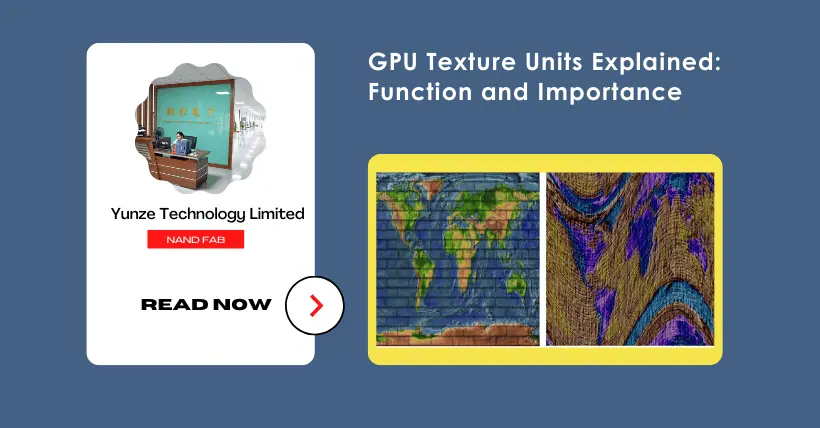1. Definition of Texture Units
Compared to raster units and tensor units in graphics cards, the concept of texture units (Texture Unit) is much easier to understand, as its actual meaning is quite similar to its literal meaning. Simply put, a texture unit is a crucial component of the GPU (Graphics Processing Unit) responsible for processing and applying texture mapping.
2. Basic Principles of Texture Mapping
In various 3D applications, objects appear realistic because they contain many details, such as wood grain, brick textures on walls, and skin textures.
These details are essentially the materials (or textures) of a model. In 3D applications, programs automatically load these materials and correctly map them onto the 3D model’s surface according to real-world physical rules (similar to applying textures). This process enhances the model’s realism and richness, which is the fundamental principle of texture mapping and the primary function of texture units in a graphics card.
3. Specific Implementation of Texture Mapping
1. Texture Sampling
The texture unit first performs a texture sampling operation. It retrieves the corresponding color values or other texture information from the texture image based on the texture coordinates of each vertex on the 3D model.
2. Filtering and Interpolation
During the sampling process, texture mapping on the 3D model surface may undergo stretching, scaling, or other transformations, causing the texture pixels to mismatch with the model’s surface pixels. To resolve this, the texture unit applies filtering operations. Common filtering methods include nearest-neighbor filtering and linear filtering.
- Nearest-neighbor filtering selects the texture pixel closest to the sampling point. This method is fast but may cause aliasing.
- Linear filtering calculates a weighted average of multiple surrounding texture pixels to obtain the sampled value, making the texture appear smoother.
Additionally, when switching between textures of different resolutions or performing texture interpolation on the model surface, the texture unit performs necessary calculations to ensure a natural texture transition.
3. Texture Coordinate Transformation
Before mapping textures onto a 3D model’s surface, the texture unit needs to transform the texture coordinates. This is because the texture coordinates of a 3D model must be adjusted according to different viewing angles and transformations. The texture unit modifies texture coordinates using the model’s transformation matrix, applying translation, rotation, and scaling operations to align the texture with the model’s actual position and orientation.
4. Performance Metrics of Texture Units
1. Texture Fill Rate
Texture fill rate is a key performance metric for texture units, indicating the number of texture pixels that can be processed per unit of time. A higher texture fill rate means the texture unit can map textures onto 3D models more quickly, improving rendering speed and image quality.
2. Texture Bandwidth
Texture bandwidth refers to the speed at which texture data is transferred between the texture unit and memory. Higher texture bandwidth ensures that the texture unit can quickly obtain the required texture data, preventing rendering performance bottlenecks caused by data transfer limitations.
3. Number of Simultaneously Processed Textures
Modern graphics cards’ texture units can typically handle multiple textures simultaneously. This capability allows a single rendering cycle to apply multiple different textures to a 3D model, such as diffuse textures, normal maps, and specular textures, achieving more complex and realistic material effects. The greater the number of simultaneously processed textures, the better the graphics card can handle complex materials and scenes.
5. Conclusion
In summary, texture units are an essential part of a graphics card, playing a key role in achieving realistic 3D graphics rendering. With continuous technological advancements, texture units will keep evolving toward higher performance and richer functionalities, delivering even more immersive and stunning visual experiences for users.
Related:

Disclaimer:
- This channel does not make any representations or warranties regarding the availability, accuracy, timeliness, effectiveness, or completeness of any information posted. It hereby disclaims any liability or consequences arising from the use of the information.
- This channel is non-commercial and non-profit. The re-posted content does not signify endorsement of its views or responsibility for its authenticity. It does not intend to constitute any other guidance. This channel is not liable for any inaccuracies or errors in the re-posted or published information, directly or indirectly.
- Some data, materials, text, images, etc., used in this channel are sourced from the internet, and all reposts are duly credited to their sources. If you discover any work that infringes on your intellectual property rights or personal legal interests, please contact us, and we will promptly modify or remove it.



